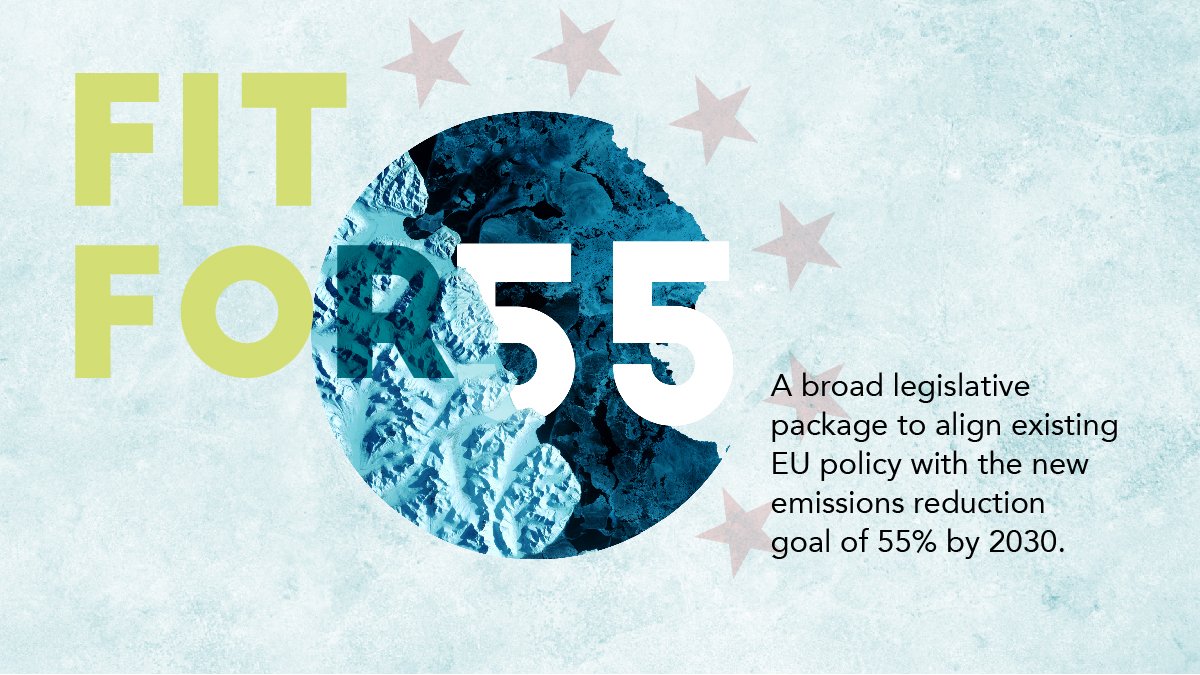Anticipant de quelques jours sur les constats alarmants dressés par le GIEC à l’attention des décideurs1, la Commission européenne a publié mi-juillet dernier un « Paquet » politique et normatif très ambitieux en matière d’énergie-climat.
Il s’agit de faire plus, d’ici 2030, qu’au cours des trois dernières décennies pour tenir un objectif de réduction des émissions de gaz à effet de serre de 55% par rapport à 1990 !
Une trajectoire complexe, mais qui se veut pragmatique en tirant des enseignements du bilan de la Cop 21 : retrait des États-Unis pendant quatre ans, accroissement de la production de matières premières fossiles par 8 autres pays signataires membres du G20, absence de contrôles et de sanctions.
Deux mesures « phares » pour tenir l’objectif.
L’extension du marché régulé du carbone.
L’Union européenne a instauré en 2005 le Système d’échanges de quotas d’émission (SEQE), qui a été le premier marché mondial du carbone. Il repose sur le principe d’un plafonnement des droits d’émission pouvant être émis par certains secteurs économiques. Dans la limite autorisée, les acteurs reçoivent, achètent ou peuvent échanger des quotas en fonction de leurs besoins. Le plafond est abaissé progressivement tandis que la suppression des quotas gratuits est planifiée par avance.
Ce système concerne actuellement la production d’électricité, des installations industrielles à forte intensité énergétique (raffineries, métallurgie, cimenteries, papier-carton, chimie…) et l’aviation commerciale interne à l’UE.
La volonté de la Commission est d’accélérer sensiblement la baisse des émissions sur ce marché d’ici 2030, tout en créant un second SEQE dédié aux transports routier et maritime ainsi qu’au chauffage des bâtiments.
Vers un mécanisme d’ajustement carbone aux frontières.
Le second axe suscitera probablement d’importantes tensions diplomatiques. Mais sa mise en œuvre permettra de franchir le pas indispensable pour une économie décarbonée saine et performante.
Il s’agit d’instaurer un ajustement carbone aux frontières de l’UE pour maîtriser les risques dits de « fuite carbone » : délocalisations et concurrences régionales inéquitables.
L’Europe entend aussi par ce biais prendre un certain leadership normatif et créer un effet d’entraînement sur les autres puissances régionales.
Propositions complémentaires participant à l’accélération des transitions.
Le « Paquet du 14 juillet 2021 » porte sur dix-huit documents, souvent très techniques et comporte des milliers de pages. Son analyse d’impacts par les États membres puis les procédures de négociations et d’adoption devraient s’étirer sur près de 24 mois.
Mais la vision générale et ses déclinaisons sectorielles font l’objet d’accords d’intentions, du moins sur leurs grandes lignes.
– Secteurs hors SEQE
C’est ici le Règlement « partage de l’effort » (ESR) qui s’applique. Il laisse aux États la latitude d’apprécier les mesures à mettre en oeuvre pour tenir le cap européen, sur la base d’une clef de répartition qui repose pour partie sur le PIB par habitant. Dans sa reconfiguration, il porterait essentiellement sur la gestion des déchets et les petites installations industrielles, compte tenu de la création d’un second SEQE « « transports-bâtiments » et de l’inclusion de l’agriculture dans un nouvel objectif « utilisation des terres et de la forêt ». La Commission propose de porter de 32 à 40% les réductions d’émissions de GES du champ ESR en 2030, par rapports à la référence 2005.
– Directives énergies
Bien que révisée en 2018, la Directive sur les énergies renouvelables pourrait voir ses objectifs à 2030 rehaussés de 32% à 40% avec un focus porté à 49% pour l’énergie utilisée dans les bâtiments. Pour sa part, la Directive sur la taxation des énergies devrait connaître une profonde révision en mettant fin à un grand nombre d’exonérations et en mettant l’accent sur les sources d’énergies fossiles les plus polluantes.
– Arrêt de la construction et de la vente en Europe des véhicules thermiques / carburants alternatifs pour les transports
Des normes très rigoureuses de diminution des émissions de CO2 sont avancées pour les véhicules neufs (objectif de réduction de 55% des rejets autorisés en 2021 pour l’horizon 2030, contre 37,5% fixés à ce jour) ; avant une disparition des véhicules thermiques entre 2035 et 2040. Sur ce point l’Union s’engage à développer rapidement une infrastructure dense de carburants alternatifs ; comme elle entend soutenir une substitution de carburants durables pour les transports maritime et aérien
– Stratégie forestière
Enfin, la Commission souhaite se doter, en modifiant le Règlement UTCATF (affectation des terres et forêts), d’une véritable doctrine sur la multifonctionnalité des forêts, à la fois comme puits net de carbone (terres et forêts), réservoir de la biodiversité et ressources naturelles pour l’économie (bois matériau, industrie et énergie).
Multisectoriel et cohérent, ce « Paquet » constitue un fil rouge robuste et cohérent pour envisager une neutralité carbone régionale entre la moitié et la fin de ce siècle.
En mobilisant d’importants moyens d’investissement et de recherche-développement, en prévoyant des mécanismes d’équité et de solidarité, il propose aussi une voie soutenable pour libérer l’Europe de sa dépendance aux énergies fossiles.
C’est celle, individuelle et collective, de la responsabilisation, de l’anticipation et de l’innovation pour réussir une transition économique et sociale apaisée.
Olivier ABULI, consultant conseil et analyses



